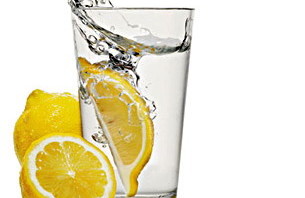
Sure commercial, chemical-based cleaning products are convenient, but at what cost? The American Association of Poison Control Centers recorded many exposures to household cleaning substances were serious enough to require treatment in a health care facility. Testing of 20 top cleaning products commissioned by Women’s Voices for the Earth (WVE) for the report Dirty Secrets revealed hidden toxic chemicals such as toluene, 1,4-dioxane, phthalates, chloroform, a synthetic musk and several known allergens. Because cleaning product companies are not required to disclose ingredients, consumers have no way to know that these chemicals are lurking in products they buy and use in their homes. In the US, 1 in 3 people suffer from allergies, asthma, sinusitis or bronchitis (US National Center for Health Statistics). Treatment for these conditions should include reducing synthetic chemicals in the home environment.
There are many inexpensive, easy-to-use natural alternatives which can safely be used in place of commercial household products. Here is a list of common, environmentally safe products which can be used alone or in combination for a wealth of household applications.
Baking Soda – cleans, deodorizes, softens water, scours.
Soap – unscented NATURAL soap or castille in liquid form, flakes, powders or bars is biodegradable and will clean just about anything.
Lemon – one of the strongest food-acids, effective against most household bacteria.
Borax – (sodium borate) cleans, deodorizes, disinfects, softens water, cleans wallpaper, painted walls and floors. Is borax safe? Borax is considered a mild skin irritant similar to baking soda. The MSDS lists borax as a health hazard of 1, similar to salt and baking soda. A health concern with borax is with its potential to disrupt the reproductive system. Studies have not been done in humans regarding this; however, potential reproductive issues in mice are suspected from high levels of ingested borax. Use of borax for home cleaning formulas, where no borax is ingested, has not been shown to pose health hazards. Borax is a natural substance which is non-carcinogenic, does not accumulate in the body, or absorb through the skin. It is not harmful to the environment.
White Vinegar – cuts grease, removes mildew, odors, some stains and wax build-up.
Cornstarch – can be used to clean windows, polish furniture, shampoo carpets and rugs.
Salt – scrubbing. Thick kosher salt gives power to your elbow grease. To clean stubborn soap scum, combine baking soda and kosher salt and scrub.
Hydrogen Peroxide – disinfecting, removing stains. Hydrogen peroxide is a powerful disinfectant. To kill mildew, combine baking soda and hydrogen peroxide to create a paste, put on mildew and allow to sit for a few minutes before wiping away.
There are other healthy habits you can institute which will keep your home clean and free of toxins:
Exchange Indoor Air
Many modern homes are so tight there’s little new air coming in. Open the windows from time to time or run any installed exhaust fans. In cold weather, the most efficient way to exchange room air is to open the room wide – windows and doors, and let fresh air in quickly for about 5 minutes. The furnishings in the room, and the walls, act as ‘heat sinks’, and by exchanging air quickly, this heat is retained.
Minimize Dust
Remove clutter which collects dust, such as old newspapers and magazines. Try to initiate a ‘no-shoes-indoors’ policy. If you’re building or remodelling a home, consider a central vacuum system; this eliminates the fine dust which portable vacuum cleaners recirculate.
Use Cellulose Sponges
Most household sponges are made of polyester or plastic which are slow to break down in landfills, and many are treated with triclosan, a chemical that can produce chloroform (a suspected carcinogen) when it interacts with the chlorine found in tap water. Instead try cellulose sponges, available at natural foods stores, which are biodegradable and will soak up spills faster since they’re naturally more absorbent.
Keep Bedrooms Clean
Most time at home is spent in the bedrooms. Keep pets out of these rooms, especially if they spend time outdoors.
Use Gentle Cleaning Products
Of the various commercial home cleaning products, drain cleaners, toilet bowl cleaners and oven cleaners are the most toxic. Use the formulas described above or purchase ‘green’ commercial alternatives. Avoid products containing ammonia or chlorine, or petroleum-based chemicals; these contribute to respiratory irritation, headaches and other complaints.
Clean from the Top Down
When house cleaning, save the floor or carpet for last. Clean window blinds and shelves first and then work downwards. Allow time for the dust to settle before vacuuming.
And let’s not forget how expensive cleaning products can be. Why buy them when you can make SAFER products for just pennies using ingredients you probably already have in your kitchen? For some great natural cleaning recipes, check out our “Spring” board on Pinterest.






- Facebook
- Instagram
- Twitter
- YouTube
- Pinterest
Follow @Honeybee_Grdns